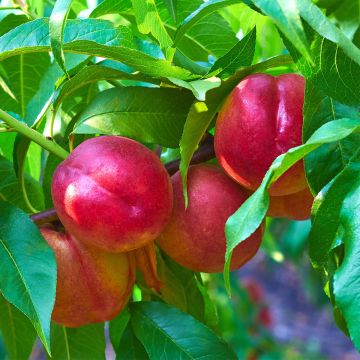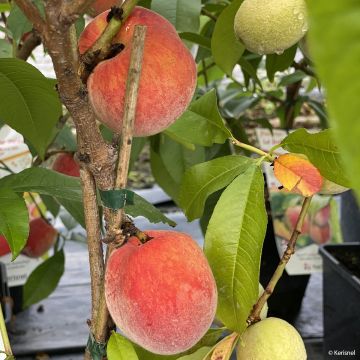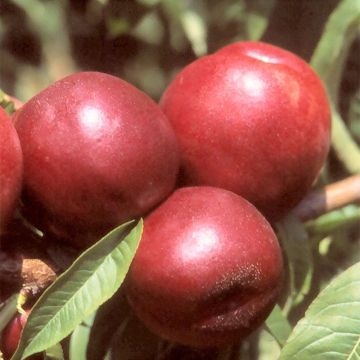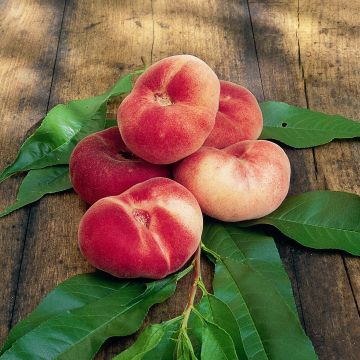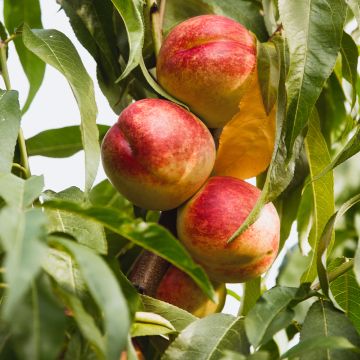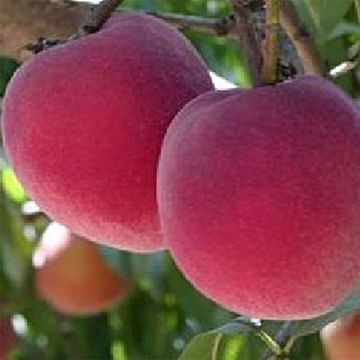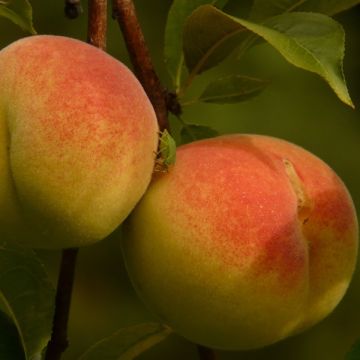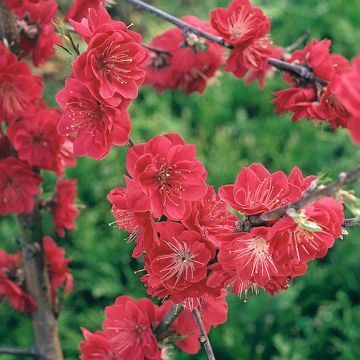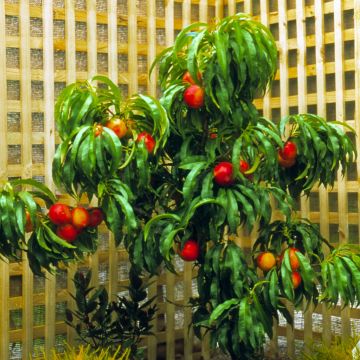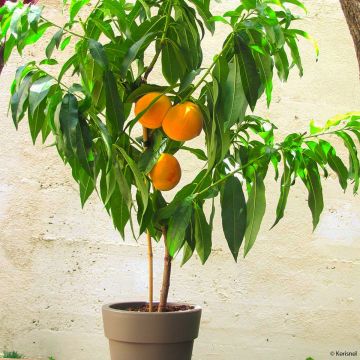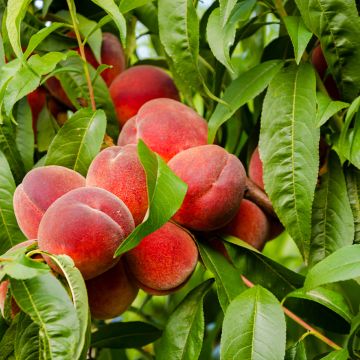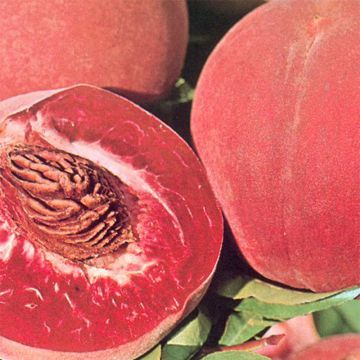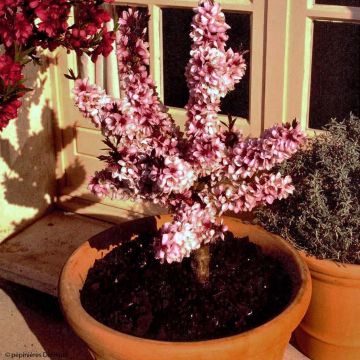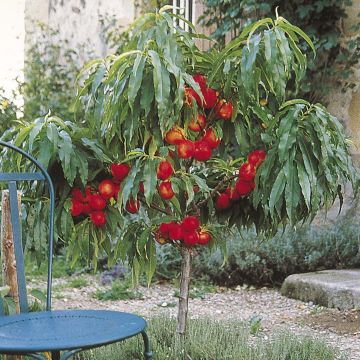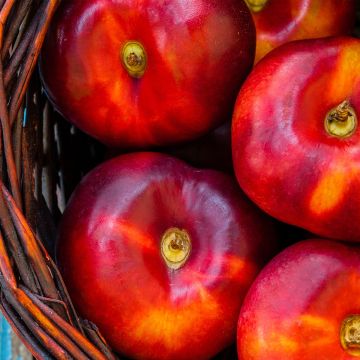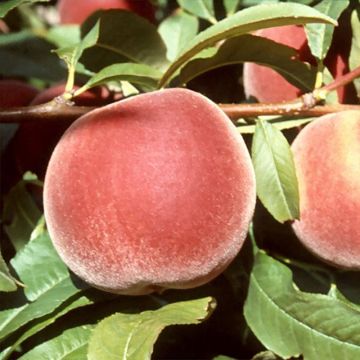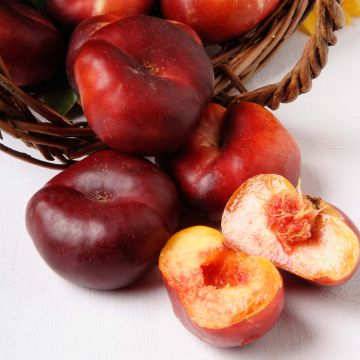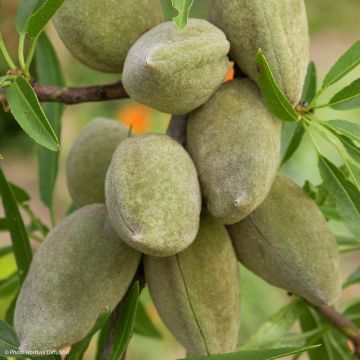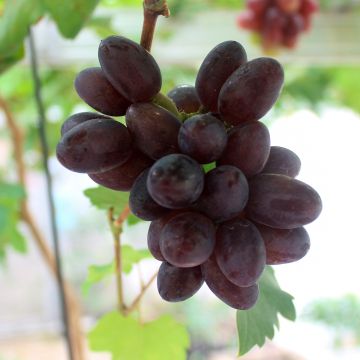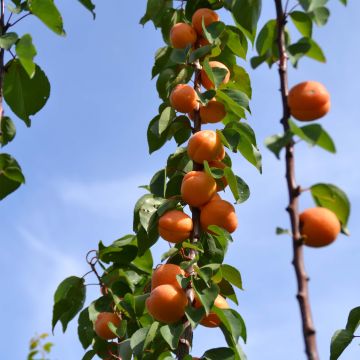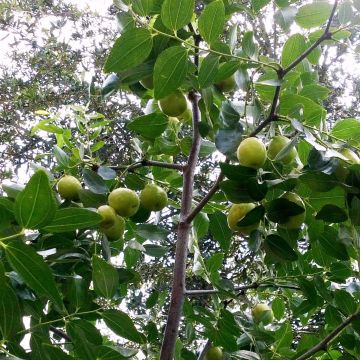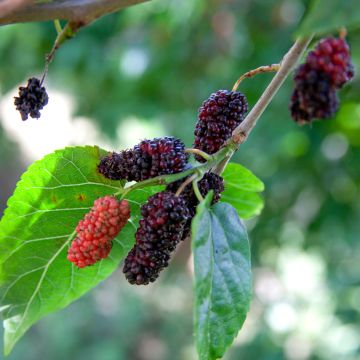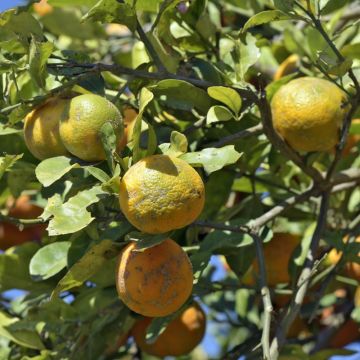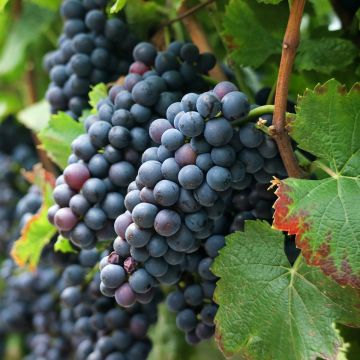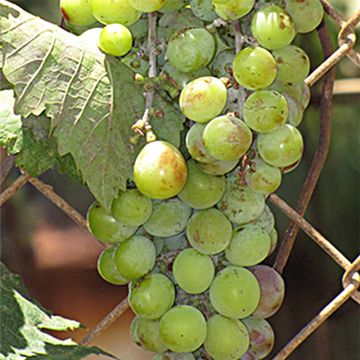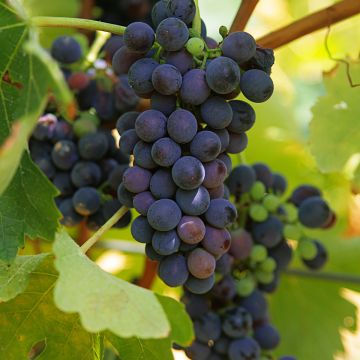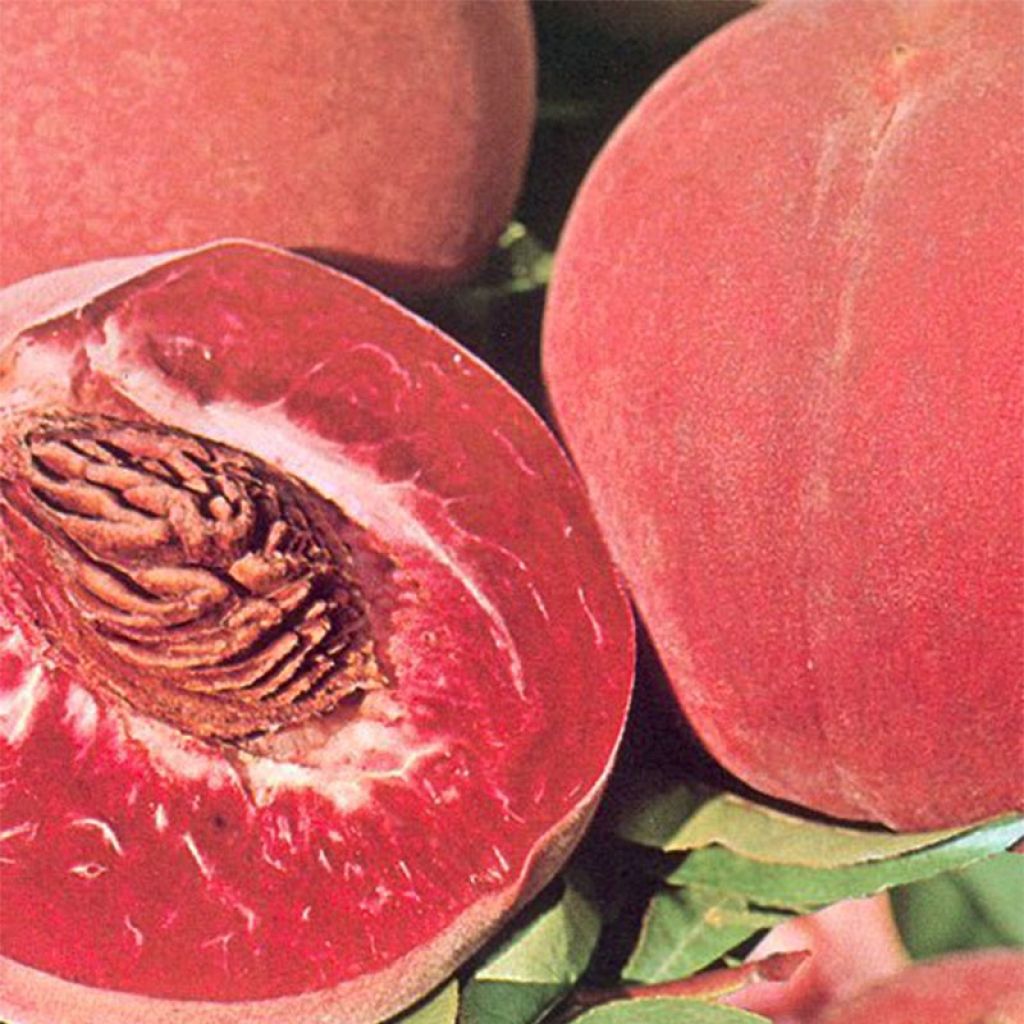

Pêcher Sanguine vineuse Bio racines nues, forme scion
Prunus persica Sanguine - Organic Peach Tree
Prunus persica Sanguine vineuse
Peach, Peach tree
Very well in line with my expectations
carole, 26/02/2024
Why not try an alternative variety in stock?
View all →This plant carries a 6 months recovery warranty
More information
We guarantee the quality of our plants for a full growing cycle, and will replace at our expense any plant that fails to recover under normal climatic and planting conditions.
Oversize package: home delivery by special carrier from €6.90 per order..
Express home delivery from €8.90.
Delivery to Corse prohibited: UE law prohibits the import of this plant from mainland France to Corse as part of the fight against Xylella fastidiosa. Please accept our sincere apologies.
More information
Description
The Organic Sanguine Peach is a particularly late variety, suitable for cultivation in many regions outside of mountainous climates. The tree, with its strong vigour, is capable of producing its first fruits two years after planting, three years after sowing from a stone. This variety is self-fertile, but the presence of another peach tree will improve fertility. Its small round peaches are covered with a velvety skin, to which a grey down gives an original wine-like color. It protects a flesh of blood red colour, very juicy, with a unique flavour and a delicate scent of bitter almond. These vine peaches are ideal for jams, compotes, pies, preserves, and even as table fruit. The abundant harvest takes place at ripeness, from late August to September.
The species name "persica" was given to the peach, which was thought to originate from Persia. In reality, all cultivated forms originate from northern China. Its appearance in Europe occurred in the 6th century and experienced significant development in the 19th century. From there, numerous selections aimed at improving the fruit's taste qualities took place. The Blood Peach is a French variety.
Like many fruit trees, the Sanguine Peach appreciates light, rich, and deep soils, and it does not tolerate excess water or heavy and compact soils. A sunny location sheltered from the wind will protect flowering and aid in fruiting. It is a tree with an erect habit, indicating a tall-trunked tree with many vertically growing branches, giving it an elegant and slender silhouette. It can reach a height of 5m (16ft) and a spread of 3 to 4m (10 to 13ft). Its deciduous foliage is bright green and emits a slight almond scent. Its leaves are long, measuring 8 to 15cm (3 to 6in) in length and 3 to 4cm (1 to 2in) in width, with a short petiole. Its pale pink flowering, full of charm, occurs late in April, making it suitable for cultivation in regions north of the Loire. The flowers are hermaphroditic and self-fertile. Fruit formation results in small round peaches (4 to 5cm (2in)), red with grey down. This tree does not require much maintenance, except for regular treatment against peach leaf curl in humid climates. It tolerates pruning well.
Peaches can be enjoyed raw, cooked, sweetened, salted, flambéed, glazed, or deglazed. They pair very well with wine and certain meats, such as duck. They can be found in numerous recipes, especially for jams, compotes, and pastries...
For transport reasons, our tallest scions may be pruned before shipping. They are suitable for all common training sizes: cordons, espaliers, goblets, half-standards, and low standards, except for high standards. If you would like more information or advice on training your fruit trees, please do not hesitate to contact us.
Report an error about the product description
Prunus persica Sanguine - Organic Peach Tree in pictures
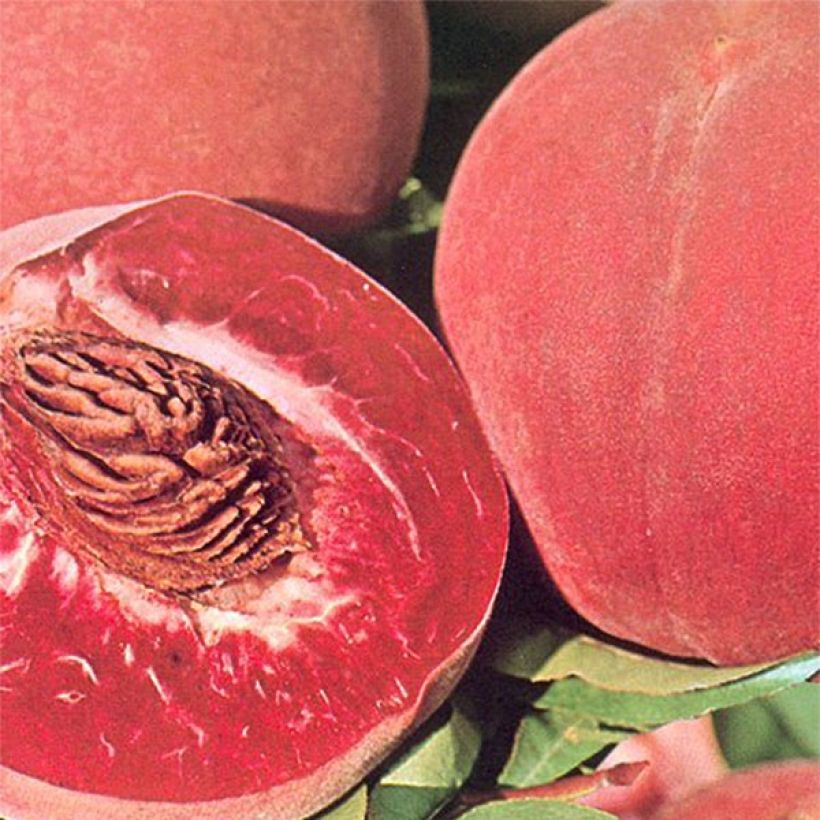

Plant habit
Fruit
Flowering
Foliage
Botanical data
Prunus
persica
Sanguine vineuse
Rosaceae
Peach, Peach tree
Western Europe
Other Peach and Nectarine trees
Planting and care
The Sanguine Peach is preferably planted from October to December. It is hardy down to a minimum of -12°C (10.4°F), and even more so for mature specimens. Only montane climates are unsuitable for it. Dig a hole two to three weeks before planting, twice as wide and deep as the pot. On the day, place the tree with its pot in a basin of water, so as to moisten the entire root ball by capillary action. Add compost to the bottom of the hole. Install the tree in the hole, fill with a mixture of soil and compost. Gently firm the soil around the base of the tree as you fill, ensuring that the roots are in close contact with the soil. The root ball should be completely covered. Water generously.
The Sanguine Peach has a semi-pivoting root system. It thrives in fairly deep soils. It also prefers a light and well-draining soil.
Planting period
Intended location
Care
-
, onOrder confirmed
Reply from on Promesse de fleurs
Mediterranean fruit trees
Haven't found what you were looking for?
Hardiness is the lowest winter temperature a plant can endure without suffering serious damage or even dying. However, hardiness is affected by location (a sheltered area, such as a patio), protection (winter cover) and soil type (hardiness is improved by well-drained soil).

Photo Sharing Terms & Conditions
In order to encourage gardeners to interact and share their experiences, Promesse de fleurs offers various media enabling content to be uploaded onto its Site - in particular via the ‘Photo sharing’ module.
The User agrees to refrain from:
- Posting any content that is illegal, prejudicial, insulting, racist, inciteful to hatred, revisionist, contrary to public decency, that infringes on privacy or on the privacy rights of third parties, in particular the publicity rights of persons and goods, intellectual property rights, or the right to privacy.
- Submitting content on behalf of a third party;
- Impersonate the identity of a third party and/or publish any personal information about a third party;
In general, the User undertakes to refrain from any unethical behaviour.
All Content (in particular text, comments, files, images, photos, videos, creative works, etc.), which may be subject to property or intellectual property rights, image or other private rights, shall remain the property of the User, subject to the limited rights granted by the terms of the licence granted by Promesse de fleurs as stated below. Users are at liberty to publish or not to publish such Content on the Site, notably via the ‘Photo Sharing’ facility, and accept that this Content shall be made public and freely accessible, notably on the Internet.
Users further acknowledge, undertake to have ,and guarantee that they hold all necessary rights and permissions to publish such material on the Site, in particular with regard to the legislation in force pertaining to any privacy, property, intellectual property, image, or contractual rights, or rights of any other nature. By publishing such Content on the Site, Users acknowledge accepting full liability as publishers of the Content within the meaning of the law, and grant Promesse de fleurs, free of charge, an inclusive, worldwide licence for the said Content for the entire duration of its publication, including all reproduction, representation, up/downloading, displaying, performing, transmission, and storage rights.
Users also grant permission for their name to be linked to the Content and accept that this link may not always be made available.
By engaging in posting material, Users consent to their Content becoming automatically accessible on the Internet, in particular on other sites and/or blogs and/or web pages of the Promesse de fleurs site, including in particular social pages and the Promesse de fleurs catalogue.
Users may secure the removal of entrusted content free of charge by issuing a simple request via our contact form.
The flowering period indicated on our website applies to countries and regions located in USDA zone 8 (France, the United Kingdom, Ireland, the Netherlands, etc.)
It will vary according to where you live:
- In zones 9 to 10 (Italy, Spain, Greece, etc.), flowering will occur about 2 to 4 weeks earlier.
- In zones 6 to 7 (Germany, Poland, Slovenia, and lower mountainous regions), flowering will be delayed by 2 to 3 weeks.
- In zone 5 (Central Europe, Scandinavia), blooming will be delayed by 3 to 5 weeks.
In temperate climates, pruning of spring-flowering shrubs (forsythia, spireas, etc.) should be done just after flowering.
Pruning of summer-flowering shrubs (Indian Lilac, Perovskia, etc.) can be done in winter or spring.
In cold regions as well as with frost-sensitive plants, avoid pruning too early when severe frosts may still occur.
The planting period indicated on our website applies to countries and regions located in USDA zone 8 (France, United Kingdom, Ireland, Netherlands).
It will vary according to where you live:
- In Mediterranean zones (Marseille, Madrid, Milan, etc.), autumn and winter are the best planting periods.
- In continental zones (Strasbourg, Munich, Vienna, etc.), delay planting by 2 to 3 weeks in spring and bring it forward by 2 to 4 weeks in autumn.
- In mountainous regions (the Alps, Pyrenees, Carpathians, etc.), it is best to plant in late spring (May-June) or late summer (August-September).
The harvesting period indicated on our website applies to countries and regions in USDA zone 8 (France, England, Ireland, the Netherlands).
In colder areas (Scandinavia, Poland, Austria...) fruit and vegetable harvests are likely to be delayed by 3-4 weeks.
In warmer areas (Italy, Spain, Greece, etc.), harvesting will probably take place earlier, depending on weather conditions.
The sowing periods indicated on our website apply to countries and regions within USDA Zone 8 (France, UK, Ireland, Netherlands).
In colder areas (Scandinavia, Poland, Austria...), delay any outdoor sowing by 3-4 weeks, or sow under glass.
In warmer climes (Italy, Spain, Greece, etc.), bring outdoor sowing forward by a few weeks.

































